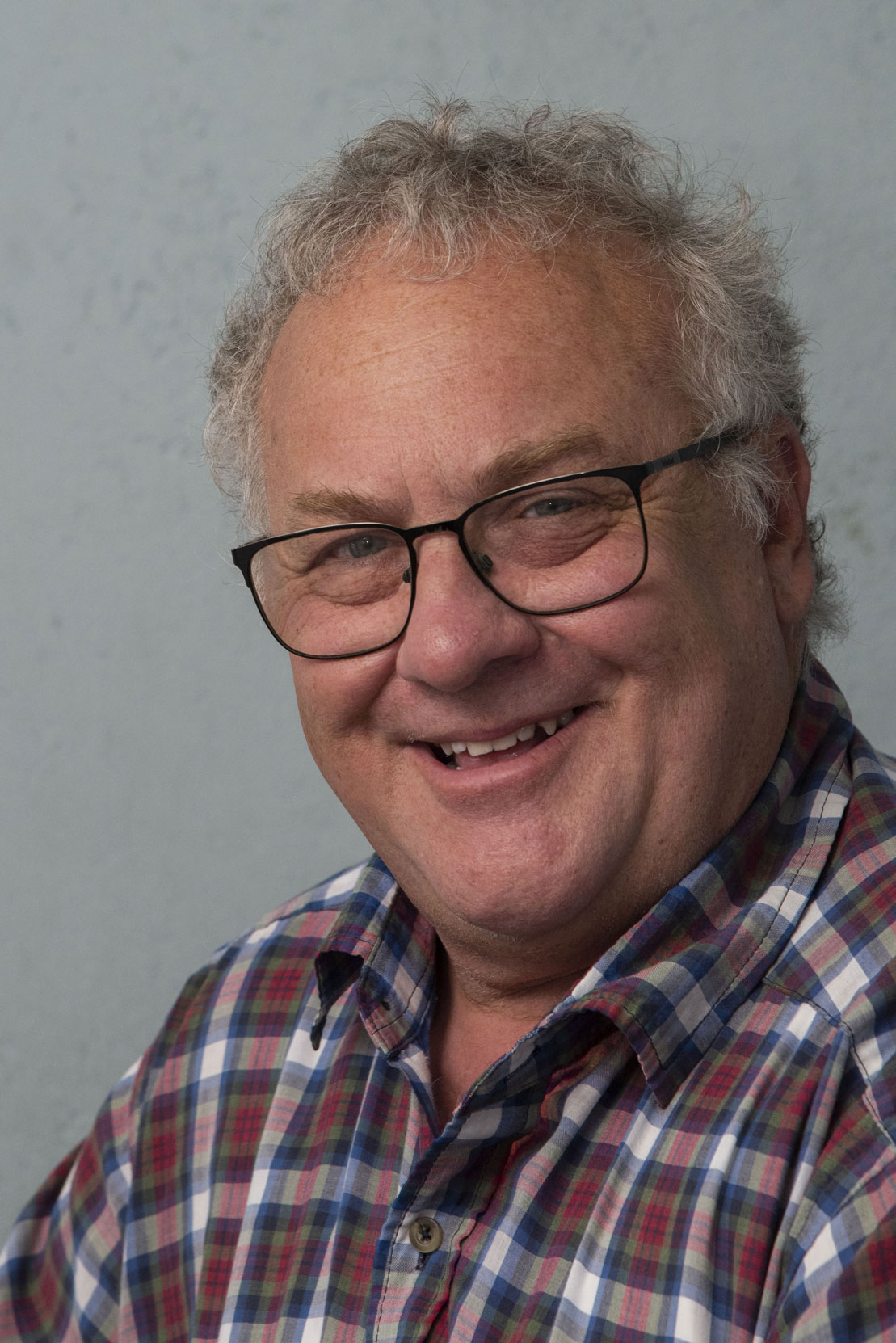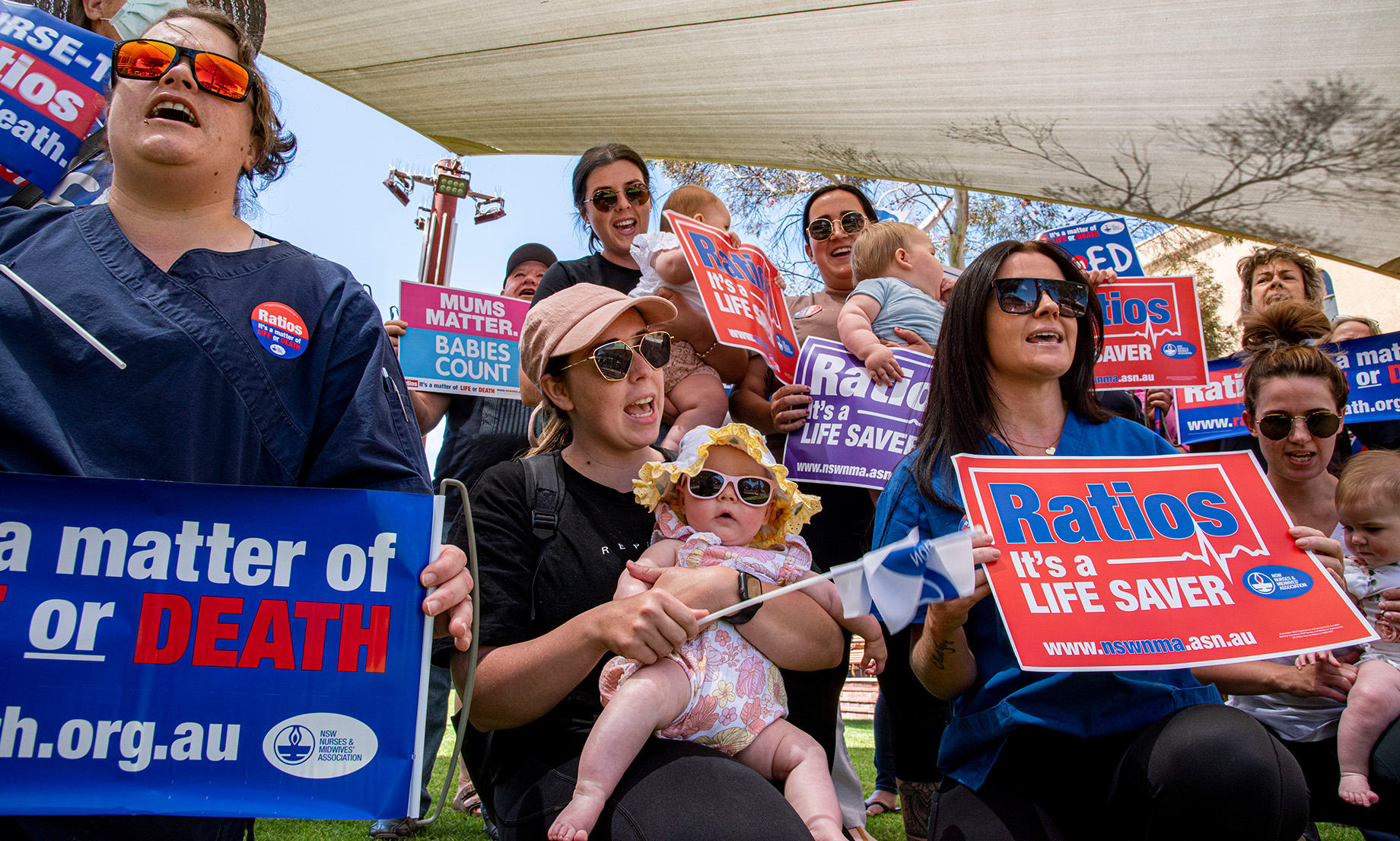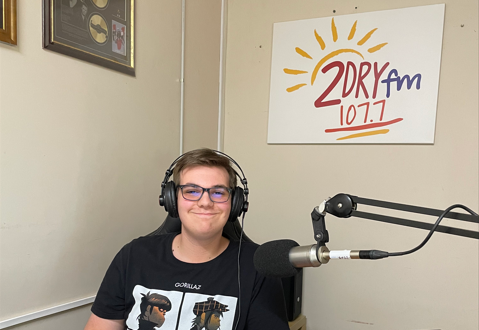Wednesday saw the fourth 24-hour nurses’ strike this year with around 40 local nursing staff and midwives protesting in the town square from 11am.
The NSW Nurses and Midwives’ Association (NSWNMA) has been in months of protracted talks with the NSW government, without successfully finding common ground on their calls for safe staffing, better working conditions and fair pay.
Joe Worgan, Assistant Secretary of the NSWNMA Broken Hill Branch, said it was not uncommon for most local nurses to be asked to work one or two double shifts in a fortnight.
“We have to look out for fatigue and staff burn out which has become critical.
“This flows onto staff morale, then unfortunately flows on as a risk to our patients if you have burnt out staff, tired and fatigued staff, then the care might not always be up to scratch.”
Statewide, public sector nurses and midwives voted in favour of the 24-hour strike for Wednesday.
During the 24-hour stoppage, life-preserving services were maintained in all public hospitals and health services.
Union representatives say they are fed up with what they call inaction by the NSW government to address widespread staffing and workload issues, leading to thousands of NSWNMA members walking off the job from 7am (morning shift) on Wednesday until 7am on Thursday (end of night shift).
NSWNMA General Secretary, Shaye Candish, said nurses and midwives were tired of being ignored over calls for safe staffing, better working conditions and fair pay to recognise their contribution to the health system.
“Since our first statewide strike on February 15, nurses and midwives have gone above and beyond to put patient care ahead of their own basic needs.
“Shift after shift they have continued, burdened by short staffing and constant requests for overtime,” said Ms Candish.
Jenna Peters, Secretary of the NSWNMA Broken Hill branch, said surrounding states all had set staff patient ratios in place.
“We are just trying to make a change and get the government to listen to us.
“The long wait times for GPs also has an impact on our Emergency Department,” Ms Peters said.
Mr Worgan said, “our counterparts in Queensland, Victoria and recently South Australia have all got ratios in place, why are we different, why are we behind?
“It has been proven to work and put less pressure on the system.
“We have one of the best health systems in the world, why should it be suffering?” Mr Worgan added.
A NSW Health spokesperson said Wednesday’s industrial action by the union was in defiance of orders from the NSW Industrial Relations Commission (IRC).
“The current ‘nursing hours per patient day’ ratio system was introduced in 2011 following an industrial settlement with the NSWNMA,” a NSW Health spokesperson said.
“This flexible ratio system considers the numbers of patients, their complexity, acuity and care needs and allows for the professional judgement of nurses and managers to adjust staffing levels to reflect the changing care needs of patients.
“Safe and effective staffing involves more than just numbers of staff, it is about making sure there is the right number of staff in the right place at the right time.
“The NSW Government and NSW Health have and continue to engage in discussions with the NSWNMA,” the spokesperson said.
Leader of the opposition Chris Minns said, on Wednesday, he could understand the nurses and midwifes’ frustrations.
“Eleven years, 12 years of inaction from the NSW Government, constantly asking the Minister and the Premier for help, particularly in busy emergency departments, and it really is falling on deaf ears when it comes to making change in NSW public health.
“We need change in the state that’s not going to happen under Dominic Perrottet.
“And I can understand the hard working nurses, midwives and professionals who are taking industrial action today,” Mr Minns said
Labour has not committed to staff patient ratios, but rather to what it terms safe staffing levels.
“We’ve made it really clear that it’s a difficult situation, the fiscal environment, the budget situation in New South Wales is tough.
“We’re $180 billion in debt, which is the largest figure the state has ever had,” Mr Minns said.
“So, we want to make long-term reform and change to our public health in this state. We believe we can do that and get it done with safe staffing levels, which effectively means one nurse to three patients in emergency departments and ICU and maternity in a first term of a Labor government.
“We’ve made it clear that in the end, it’s better we think, for the state to have that through the award system, rather than through law.” Mr Minns said.
“We appreciate that the nurses and midwives association would rather have it via the legal system and have it as a parliamentary act, and therefore through law, but we think this is a better system to get a better outcome when it comes to wages and conditions in NSW public hospitals.
“That distinction is the difference in the language. But I think it’s an important distinction and one, we want to make sure that the public understands before they vote.”
NSWNMA Assistant General Secretary, Michael Whaites, said members were overwhelmingly committed to fighting for widespread reforms to attract and retain the best health workforce in NSW.
“Our members are angry and upset, knowing so many colleagues with years of clinical experience are moving to work interstate or choosing to leave the profession,” said Mr Whaites.
“Despite the NSW government agreeing change is needed, they have failed to acknowledge the urgency, or act to address the issues impacting metropolitan and regional health services.
“Nurses and midwives have endured three years of a chaotic and disruptive pandemic, but they have been overworked and undervalued by this government for much longer.
“Rather than winding down the clock before the election next March, the NSW government must listen to nurses and midwives who have the clinical expertise to understand how to best deliver quality outcomes for patients and health staff, regardless of where they live.”
The NSWNMA confirmed it will continue meeting with the NSW government to discuss members’ demands for safe staffing ratios and improved working conditions.
Ratios considered safe by the NSWNMA are one nurse to four patients on a ward and one nurse to three patients in emergency departments.











